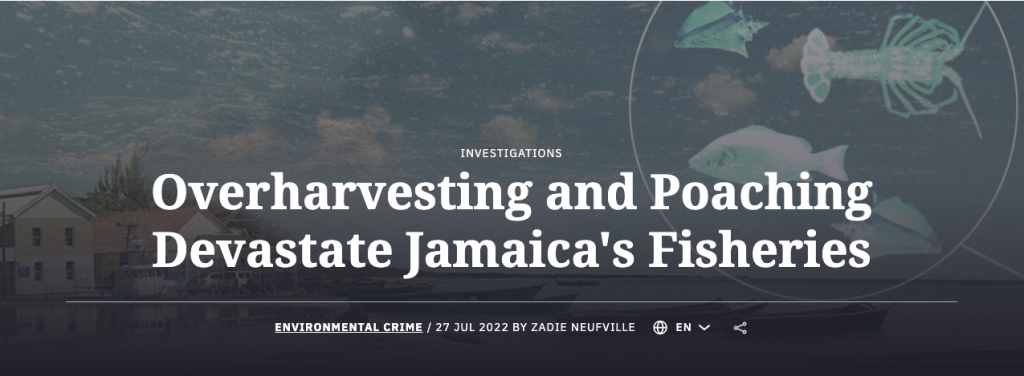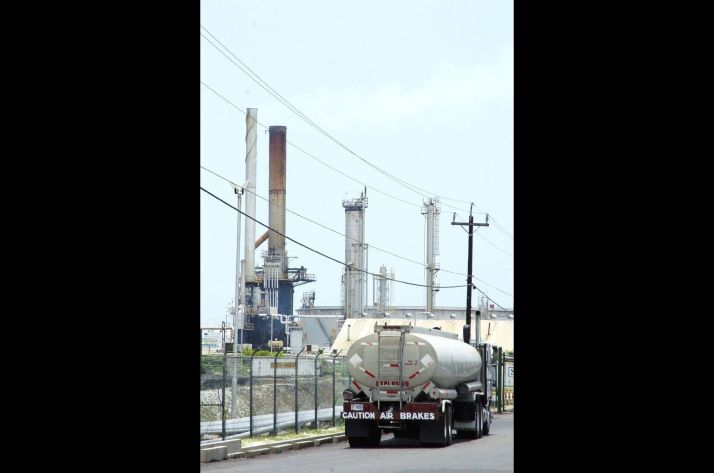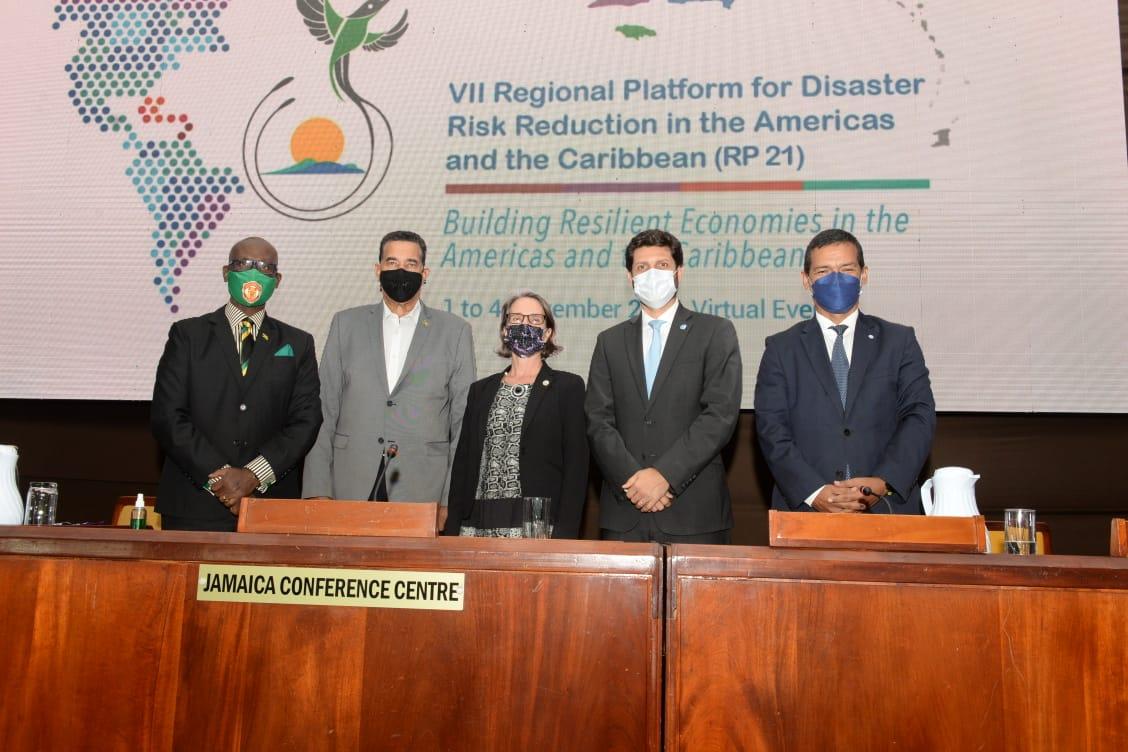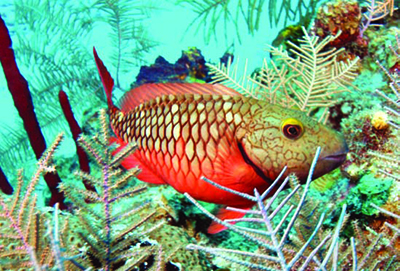
This report for InsightCrime was published on July 27.
For more than half a century, Ephraim Walters has fished the southern coast of Jamaica. But he rarely heads out any longer.
With inland waters almost barren, Walters, who goes by the nickname Frame, said he must travel farther out to sea, some 100 kilometres, spending three to five days and using up to 100 gallons of fuel.
“Sometimes you go out and you don’t catch a thing, and you can’t buy back the gas you use to go out,” the father of nine told InSight Crime.
Jamaican fishers, many unlicensed and largely ungoverned, are taking what they can from the country’s waters, draining them of shad, yellowtail, parrot, snapper, and other types of reef fish. They use destructive techniques, including small-mesh nets that scrape the ocean floor of all life. Undersized fish are harvested indiscriminately, and there are no catch limits.
SEE ALSO: Coverage of Jamaica
In deep waters, foreign vessels – some of them carrying dozens of divers – poach lobster and conch, a type of shellfish that was on the brink of collapse a few years ago, Jamaican fishers and conservation officials told InSight Crime.
“Honduran and Nicaraguan boats are there every evening, and then they go home in the early morning,” said Shawn Taylor, the head of the Jamaica Fishermen Cooperative Union.

Natural disasters and development have also decimated Jamaica’s fisheries.
Hurricanes have destroyed coral reefs, smashing, dislodging, and burying them under sediment. Development projects have drained wetlands and pumped sewage into the sea. Coral disease, sea-urchin die-off, and coral bleaching have also left reefs severely damaged. But the reefs are slowly recovering, said marine biologist Karl Aiken, Jamaica’s chair to the Convention on International Trade in Endangered Species of Flora and Fauna (CITES), a treaty meant to regulate and monitor wildlife trade.
A combination of factors has led to declines in Jamaica’s fisheries, Aiken said, but “the most important one has been very high levels of intense fishing on the islands’ fish stocks, both on our own shelf but also offshore.”
Plenty of Fish in the Sea?
Some 30 years ago, Walters sailed his boat down the coast from his hometown of Belmont to Rocky Point, a community on the island’s south coast. He never left.
Fishers headed out to sea every day then, fishing in the shallow waters of the 24-kilometre wide sea shelf. They made enough to build homes, support their families and send their children to school, he said.
“Dropping the net in the bay, we would pull it together onto the shore with a whole lot of fish,” he said. “But these days we have to go farther out to sea for far less.”
Jamaica’s waters are composed of 274,000 square kilometres of maritime space, about 25 times the size of its mainland, according to André Kong, who served as director of fisheries in the Ministry of Agriculture from 2011 to 2019.
“What makes it all so difficult is the amount of landing sites,” Kong said. “They land at many places at all different hours of the night, and there is no regulation for them to report even when they come back.”
The number of fishers registered in Jamaica is unclear. According to a 2020 Caribbean Natural Resources Institute report, citing data from the United Nations Food and Agriculture Organization (FAO), about 40,000 Jamaican fishers make their living from the sea. But Jamaica’s National Fisheries Authority has licensed only 26,000 of them.
Gavin Bellamy, head of the government’s National Fisheries Authority, acknowledges that data is lacking. But he said a new online registration system, which will create a database of boats and licensed fishers, will come online soon. He said this would eliminate weaknesses in data collection, monitoring, and enforcement. Fishers will also be instructed on new regulations. Proposals include quotas and catch sizes.
Current regulations limit specific techniques, such as spearfishing, and equipment, such as the size of fish nets. Fishing is prohibited in 18 sanctuaries. Three are in the Portland Bight Protected Area, which includes a significant portion of Jamaica’s shallow shelf. Ingrid Parchment, the executive director of the foundation that manages the protected area, said that nearly 70 per cent of boats stopped in the sanctuaries show no registration marks. The fishers themselves often lack any personal identification.
“We even have had cases where persons who are caught fishing in the sanctuary were charged and paid the fines, and then the following week they were back in the sanctuary with another boat,” Parchment told InSight Crime.
Poaching Conch Off Pedro Cay
Pedro Cay is a small cluster of islets, rocky formations, and uninhabited islands, whose southwest waters, known as Pedro Banks, are home to the country’s largest conch fishery. In 2019, conch harvesting was banned after a study revealed that the fishery was collapsing.
However, conch populations on Pedro Banks have slowly recovered, allowing for a five-month season, which resumed last year in April and ended in August. The season opened again this year at the beginning of March. There is a catch limit of 300 tons for industrial boats and 50 tons for artisanal fishers. The limits – while seemingly high – are still lower than the pre-closure quotas, said Aiken.
The waters around Morant Cays, islands on the east coast, also contain a conch fishery that has been decimated by overfishing, said Gladstone White, Jamaica’s representative to the Caribbean Network of Fisherfolk Network Organizations (CNFO). He criticized the decision to resume conch harvests, saying that the two-year ban was insufficient.
Pedro Banks is vast, about two-thirds the size of Jamaica’s mainland. The country’s coast guard comprises only five stations, just one of which is offshore.
Fishers have reported boats from nearby Honduras, Nicaragua, and the Dominican Republic poaching the waters along the western end of the banks, with some staying up to a week. The vessels, mostly converted shrimp trawlers, carry large numbers of divers who vacuum the seafloor.
Between January 2011 and March 2019, authorities intercepted 10 foreign vessels, according to then Minister of Agriculture and Fisheries Audley Shaw, who told regional officials last year that the arrests accounted for just a fraction of the foreign fishing vessels operating illegally in Jamaican waters during that time.
On occasions when foreign boats are intercepted, authorities have found not just conch and lobster but sea cucumber in its holds.
“They take everything,” Aiken said of the divers. “These poachers are highly irresponsible.”
Some Jamaican fishers have colluded with the foreign captains to help them elude the coast guard. Taylor, the head of the fishing cooperative, complained that the lack of licenses provided to fishers drives them to engage in such illegal practices.
“Because our fishers can’t get a license,” he said, “they work with foreign [vessels] to come and take up the things which are banned here.”
At 70, Walters still dives for conch and lobster when he receives his licensed quota. He also recovers fish pots that he sets 18 meters below the water’s surface.
Standing in his equipment-shed-turned-camp, Walters was surrounded by engines and other gear. The smell of a boiling pot of fish-tea permeated the air. Fishing is “hardly worth the effort,” he said.
The original story is here
*This report is part of a two-part investigation on IUU fishing with the Center for Latin American and Latino Studies at American University. The second instalment, “Plundered Oceans: IUU Fishing in SouthAmerican Seas,” is set to be published on August 3.









 KINGSTON: Nov 2016 [MONA News}: The leadership of The University of the West Indies, Mona Campus, is on a mission to make this the region’s most modern and sought-after institution, using a development model which could become the go-to for other campuses and institutions.
KINGSTON: Nov 2016 [MONA News}: The leadership of The University of the West Indies, Mona Campus, is on a mission to make this the region’s most modern and sought-after institution, using a development model which could become the go-to for other campuses and institutions.